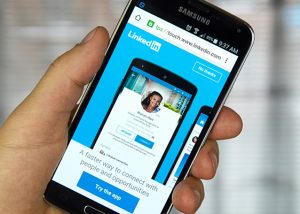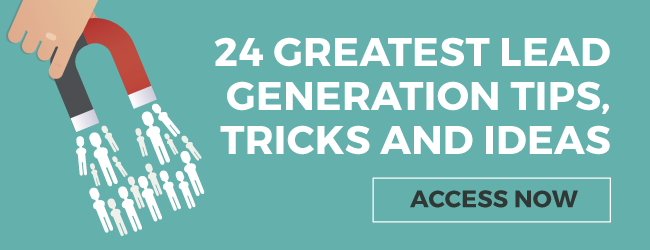Successful B2B lead generation with LinkedIn
Facebook and Twitter may rule the B2C world, but LinkedIn is the dominant social force in the B2B sphere. As the only social channel strictly consisting of professional networkers, the context of all content and communication is entirely focused around business. Hence LinkedIn is the prime spot for B2B lead generation.
With over 400 million users, LinkedIn has evolved into an influential marketing tool and an ‘absolute must’ for all businesses. When it comes to online branding, targeted content, building professional relationships and establishing your company as an industry leader, there is no other medium that can create a similar margin of influence and opportunity amongst B2B companies.
However, many companies are still failing to capitalise on the power of the social medium, especially as a B2B lead generation device capable of attracting an international client base. To ensure you and your company are getting the most out of LinkedIn, here are some tips to help you optimise your business and reap the benefits of a captive commercial audience.
1. Diversify your presence
Many people tend to approach their LinkedIn profile like they would a CV; an endless list of work accomplishments, education and volunteer work. While these components form the basis of a LinkedIn profile, many B2B marketers are missing out on a major opportunity for lead generation.
▹ Shape your profile
 When filling out your LinkedIn profile, consider who your target audience are and what will appeal to them the most. For example, manufacturing companies might want to attract purchasing agents within the firm they’re interested in securing business with. In this respect, think about topics which concern them, subjects which peak their interest and simultaneously exclude boring content and generic imagery which will make them switch off.
When filling out your LinkedIn profile, consider who your target audience are and what will appeal to them the most. For example, manufacturing companies might want to attract purchasing agents within the firm they’re interested in securing business with. In this respect, think about topics which concern them, subjects which peak their interest and simultaneously exclude boring content and generic imagery which will make them switch off.
▹ Adjust your content
Think about what information your customers are looking to source online. Tailor your content to offer your clients a valuable resource and a best practice profile, which highlights your USP’s and cuts through any un-necessary clutter.
▹ Optimise your SEO
Many people fail to realise that LinkedIn is also a search engine that functions similarly to Google and Yahoo. Hence, marketers should use SEO practices to ensure their company is found ahead of the competition for commercial advantage.
2. Join LinkedIn Groups
LinkedIn Groups are a valuable resource, offering companies access to ‘like-minded’ groups of segmented professionals, who are able to participate in discussions that interest them. Even though this opportunity is available to everyone, many marketers fail to join relevant industry groups or if they do, they don’t actively involve themselves and gain the value of their membership.
Here are some best practices when joining a LinkedIn Group:
▹ Join the right groups
When searching for the best industry groups relevant to your business, there are two best practices you can follow:
▪︎ Competitor analysis - Take a close look at what your competition is doing. What groups have they joined on LinkedIn? Do they regularly post in these groups? Is your competition securing business on LinkedIn? If so, what customers have they won? It’s crucial to get inside the mind of your opposition to capitalise on successful practices with capabilities that boost custom.
▪︎ Traditional research - Use LinkedIn’s searchable group directory to explore target keywords, based on location and industry relevance.
▹ Be helpful but strategic
While you should use LinkedIn Groups to offer valuable insights into a discussion, it’s also important to take advantage of opportunities that arise during these conversations. Perhaps you recently published a blog/ article or eBook on a subject currently being discussed within the group, now is the perfect opportunity to let other members know about it. Rather than come across too pushy, say something along the lines of: “Your comment made me think about an article we recently published, I think it might be of interest to you.”
▹ Share content carefully
One of the perks of a LinkedIn Group membership is the ability to kick off a conversation any time you like. That being said, we’re not advising you to bombard your groups with irrelevant information. You must be strategic and only share resources that you think members will value. Don’t just share your own content, link other sources to keep the discussion flowing, all the while building your authority as an industry expert.
▹ Become a thought leader
While the aim is to maximise LinkedIn groups that will in time become a valuable marketing resource, marketers must work hard to build their profile in the group first. It’s important to have your presence felt in the group by regularly sharing your experiences, asking questions and conversing with other members. It’s only by doing this that you will begin to play a central role in the group, and in time feel comfortable to voice your opinion to truly establish your knowledge on the subject.
3. Develop your network
LinkedIn is the equivalent of a never ending networking event, except with over 400 million professionals crowded into one single room…and that’s a lot of potential leads at your fingertips!

While it’s advised to develop a broad network base, avoid connecting with unsuitable users, after all, your resources will only fall on deaf ears. Instead, focus your efforts on attracting and connecting with those users that will help you gain something and potentially secure new business.
▹ Learn how to use advanced search
The advanced search function on LinkedIn can help you discover the people and organisations you should be connecting with. While premium account holders have multiple options available to them, free users still have extensive access to refined searches which enable them to narrow their efforts and find exactly who they’re looking for.
The ‘Advanced Search’ function helps companies sieve through millions of LinkedIn users to find their ‘perfect’ client base. This enables you to focus marketing strategies around the companies you want to directly target. To use the Advanced Search option, hit the drop-down menu next to the search bar, select people and then advanced.
(Note: free users will be limited to certain fields.)
▹ Get introduced
LinkedIn is a fully fledged, professionally equipped social networking site which allows people to introduce themselves to others in a friend’s network. This is an incredibly beneficial function for users, as people are automatically endorsed by a transparent connection to a mutual ‘friend’; mimicking that of a real-life introduction.
▹ Endorse and Recommend
There are two ways for LinkedIn users to advocate and give credibility to each other in relation to their skills and talents. Namely, ‘Endorsements’ and ‘Recommendations’.
▪︎ Endorsements are secondary confirmations that a user possesses a skill that they state they have. You can proactively endorse connections on their profile page by clicking on their listed skills. Alternatively, LinkedIn also prompts users to endorse their connections through regular ‘pop up’ requests.
▪︎ Recommendations are almost like mini references. They can act as a unique testimonial from a client or anyone who has had a professional relationship with you, such as a co-worker or manager. Good quality recommendations are held in much higher regard than endorsements, with people having to take the time and consideration to recount their experience of working with you.
4. Optimise your company page
▹ Create an appealing page
LinkedIn provides users with multiple imagery opportunities to maximise their brand exposure. It’s a good idea to use images that portray your company’s personality and inform page viewers about who you are as a business. You should regularly update your cover photo to reflect new products or services, or an aspect of the business you want to publicly push.
▹ Showcase Pages
Showcase pages are an excellent opportunity for businesses to present a specific product or service to a global audience. It’s an excellent way to tailor content and reflect heavily on your particular product. This simultaneously allows you to implement a targeted SEO strategy to attract a niche market for the product/service in question. You don’t need to create a separate showcase page for every single product or service you produce, but instead you can focus on your big sellers or new innovations.
▹ Get everyone involved
It’s normal to have employee’s personal pages listed and linked on the right-hand side of your company profile. It’s advised to have all your employees represented here, especially management positions which make lead generation extremely easy as people are able to locate the person best to talk to about a specific matter. The inclusion of management profiles also gives industry credibility to your company through their individual experience and skillset.
Remember to encourage your staff to get involved in sharing company updates and group discussions. This way you can create an inclusive company atmosphere which also helps to authenticate and expand your business network.
▹ Don’t forget a Call-To-Action (CTA)
One of the most overlooked ways to optimise your profile is to ensure there is clear call-to-action. This makes it easy for potential prospects to take the next step and get in contact with your company. This is also very important when using content to capture audiences by making sure there are contact details enclosed so people can easily get in touch.
Undeniably, even in our socially orientated business world, it’s extremely common for companies to overlook LinkedIn as a valuable promotional tool capable of creating immense growth opportunities. However, businesses are increasingly realising the significance of a quality LinkedIn showcase, with countless long term benefits for pro-active users.
Amongst other things, the above points illustrate the cross functionality and versatility of the social site, which can become an influential playmaker when used correctly. To take full advantage of your company’s profile, you should maximise upon all of LinkedIn’s features and encourage your employees (credible spokespeople) to do the same.
Further effort should be made to create and choose shareable content for distribution on LinkedIn. By tailoring your content to suit your intended audience, you’ll enhance your company’s opportunities by building industry credibility, referral relationships and B2B lead generation. A special focus should be made to help future prospects with their ‘pain points’, and in time they will come to view your company as someone they can trust and potentially do business with.
